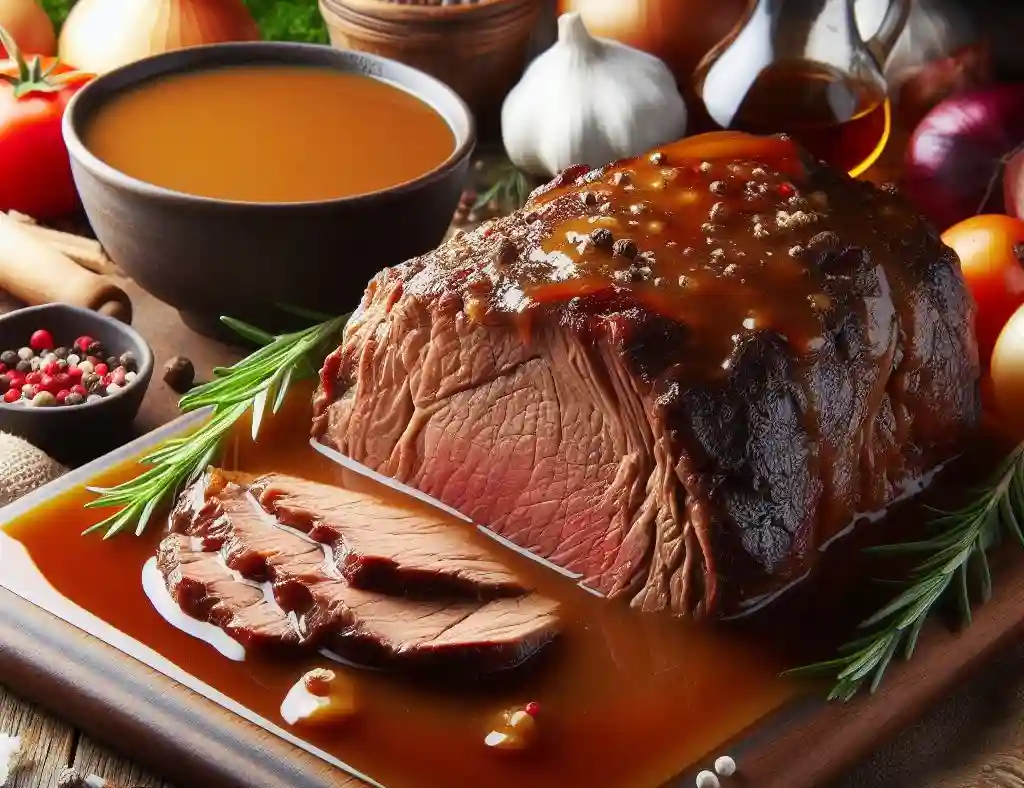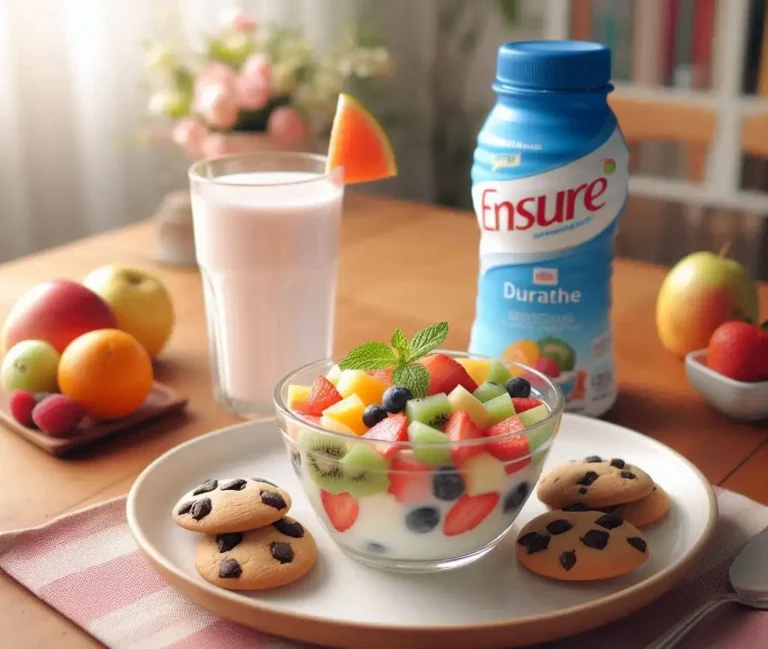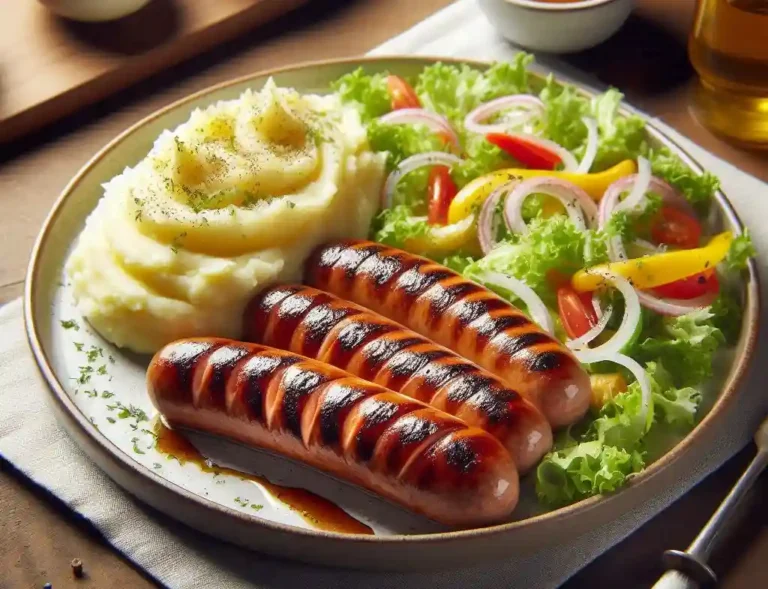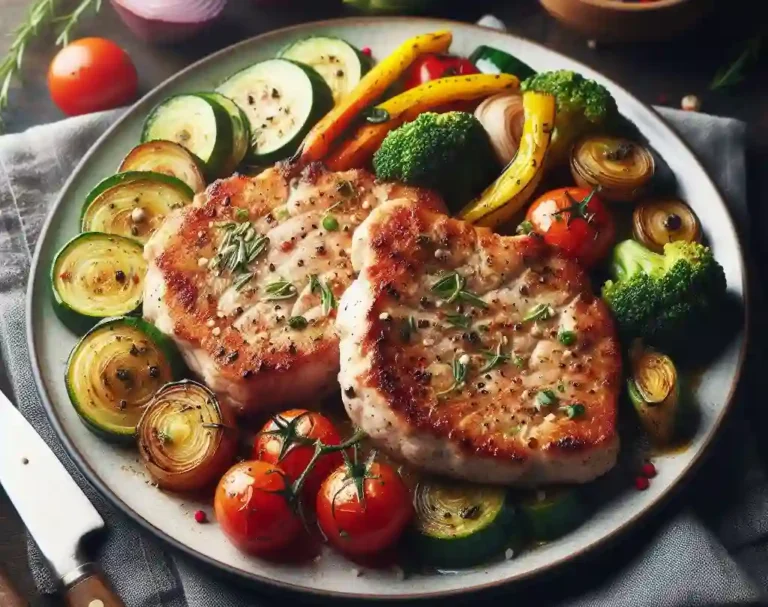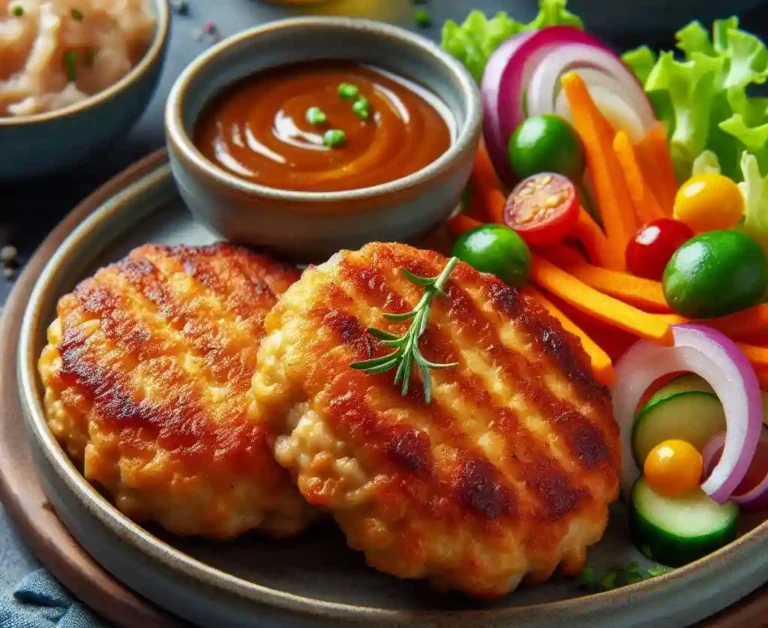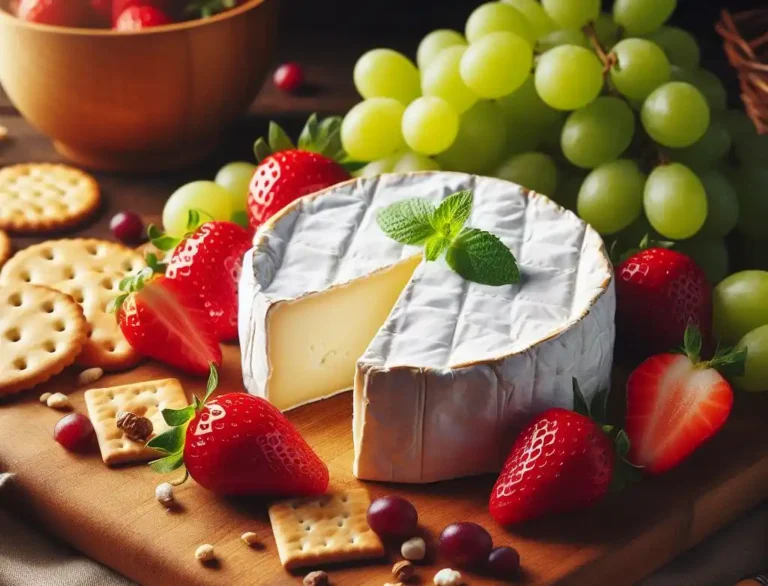How to Make Gravy from Crockpot Roast Juice? – Your Comprehensive Guide
Are you looking for a delicious way to elevate your Gravy from Crockpot Roast Juice for dinner? Look no further than making gravy from crockpot roast juice.
This flavorful gravy is the perfect finishing touch to your meal, adding depth and richness to every bite. In this guide, we will walk you through the process of making gravy from crockpot roast juice so you can savor the taste of your next dinner even more.
How to Make Gravy from Crockpot Roast Juice? – A Quick Overview
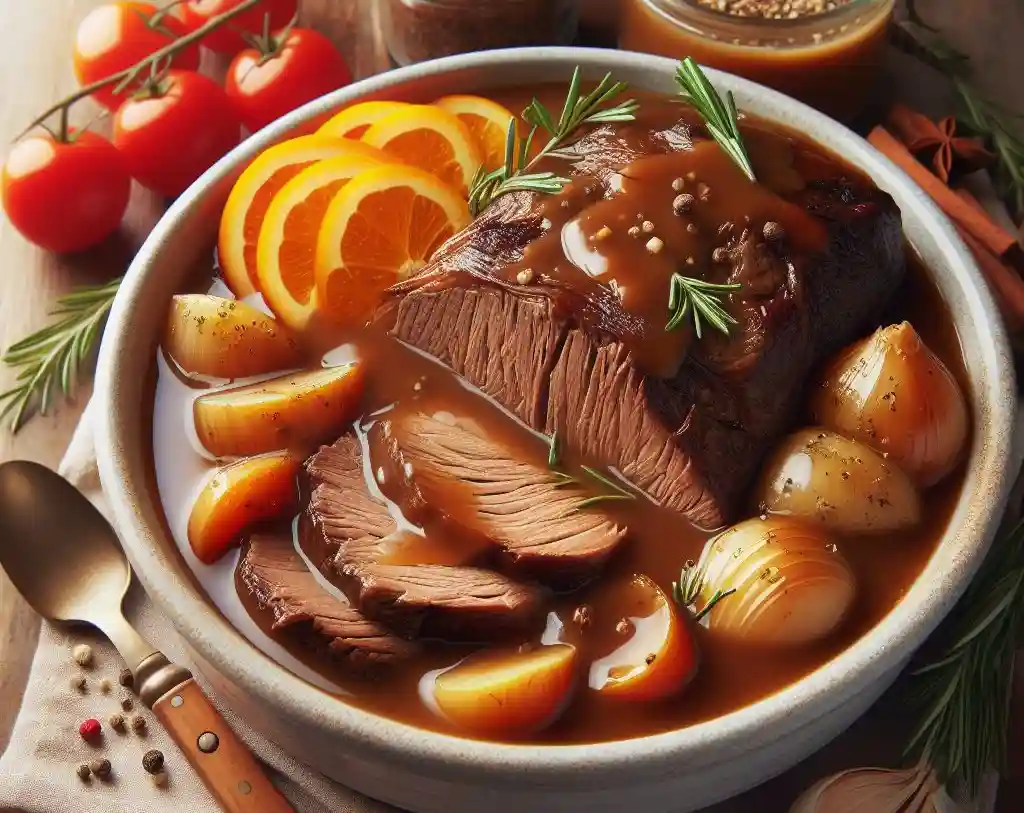
- Start by cooking your roast in the crockpot, ensuring you’ve seasoned it well and added enough liquid to produce juicy drippings.
- Once your roast is cooked, carefully remove it and any large pieces of vegetables or herbs, allowing the meat to rest before slicing.
- Pour the remaining juices from the crockpot through a fine-mesh strainer into a bowl or measuring cup, discarding the solids.
- Measure out the required amount of strained juice for your gravy, depending on the number of servings you need.
- In a saucepan, melt butter over medium heat, then add an equal amount of flour to create a roux, whisking continuously to prevent lumps.
- Gradually whisk in the strained crockpot juices to the roux, ensuring a smooth blend without clumps.
- Add your choice of thickening agent, such as cornstarch or arrowroot, if a thicker consistency is desired, preparing it in a slurry with cold water before incorporating.
- Enhance the flavor of your gravy with additional seasonings, herbs, or a splash of wine, according to taste, stirring well.
- Continue cooking the gravy on a simmer, stirring frequently, until it reaches your preferred thickness.
- Adjust the seasoning with salt and pepper as needed, tasting to ensure the gravy complements the roast.
- Serve the gravy hot over slices of your crockpot roast, or store it following proper guidelines if not used immediately.
Understanding the Basics of Gravy Making
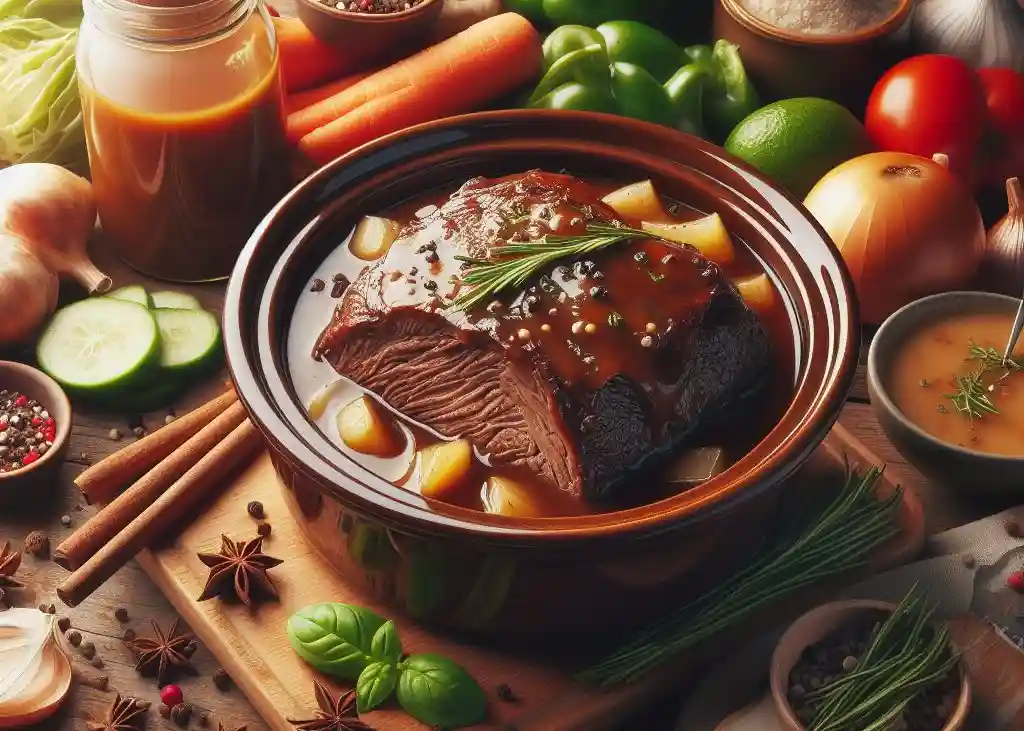
At its core, gravy is a delectable sauce that enhances various dishes with its rich flavor. The essential components of gravy include fat, a thickening agent, and liquid, which in our case is the sumptuous juice from a crockpot roast.
The fat is derived from the juices that naturally seep out during the cooking process, infusing the gravy with deep, savory notes. For thickening, common agents like flour or cornstarch are employed, which, when combined with the roast’s liquid, create a smooth and velvety sauce.
Understanding these fundamental elements is crucial for crafting a gravy that perfectly complements your crockpot roast, enriching the overall dining experience with its robust flavor profile.
Preparing Your Crockpot Roast for Optimal Juice Production
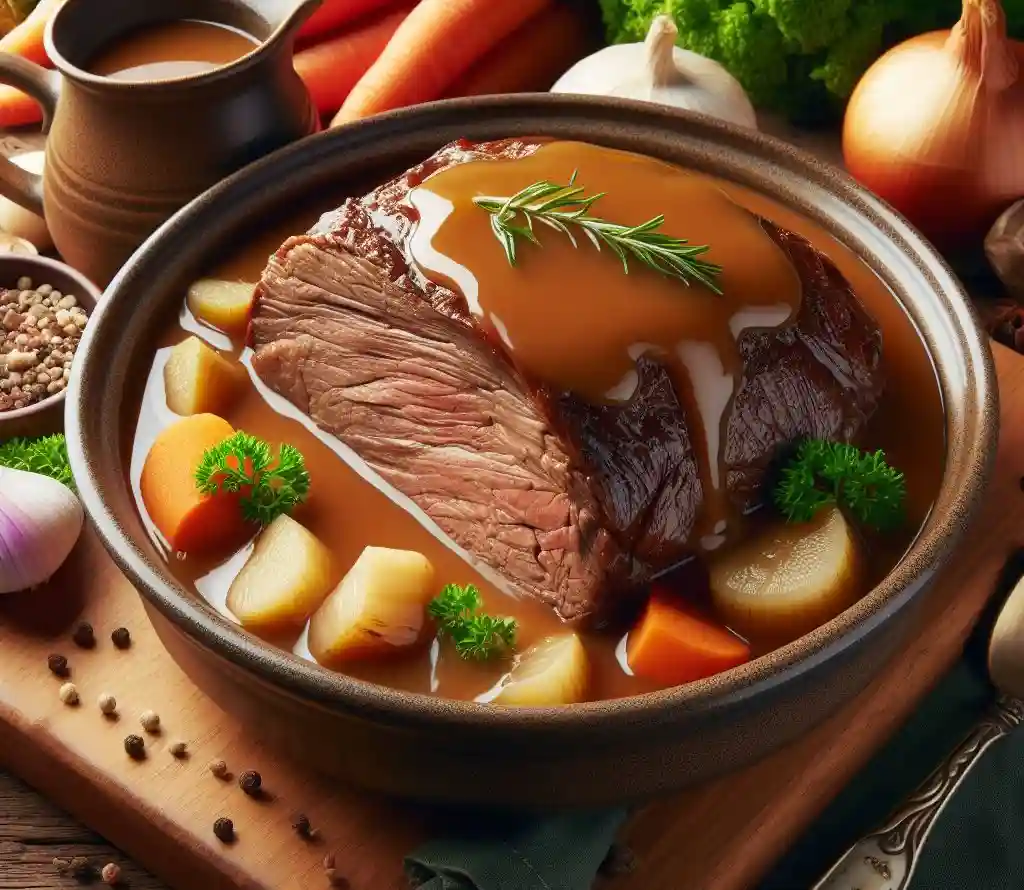
Choosing the right cut of meat is essential for maximizing juice production in your crockpot roast, which, in turn, is crucial for creating a rich and flavorful gravy. Opt for a cut with good marbling, as the fat will melt during the cooking process, contributing to the depth of flavor in the juices.
Before placing your meat in the crockpot, season it thoroughly on all sides with salt, pepper, and any other herbs or spices you prefer. This not only enhances the taste of the roast itself but also infuses the juices with additional flavors, making for a more complex and delicious gravy.
Adding a small amount of liquid, like broth or wine, to the crockpot can also help to increase the amount of juice produced, providing you with a sufficient base for your gravy.
Lastly, including vegetables such as onions, carrots, and celery can not only boost the flavor of the roast and its juices but also contribute moisture to the cooking environment, ensuring you have plenty of savory juices for your gravy.
Collecting and Straining Crockpot Juices
After your crockpot roast has finished cooking, the next step involves separating the meat from the liquid gold that will form the base of your gravy. Gently transfer the roast to a cutting board, allowing it to rest, and focus on the flavorful juices left behind.
Using a fine-mesh strainer, pour the juices into a bowl or measuring cup. This straining process ensures that any bits of meat, vegetables, or herbs are removed, leaving you with a smooth liquid. It’s important to strain carefully to avoid splashing or losing any of this valuable juice.
The clarified juice is now ready to be transformed into a delicious gravy, packed with the essence of your carefully cooked roast.
Choosing the Right Thickening Agent for Your Gravy
When it comes to selecting a thickening agent for your gravy, the choice can greatly impact the texture and flavor of the final product. Flour is a traditional option that, when combined with butter, forms a roux to thicken the gravy and add a hint of richness.
Cornstarch offers a gluten-free alternative, creating a glossy and smooth sauce without altering the flavor significantly. Arrowroot, similar to cornstarch, thickens at a lower temperature and is ideal for those looking for a more delicate consistency.
Each agent requires mixing with a small amount of cold water to create a slurry before being added to the hot liquid, preventing clumping. Understanding these nuances will help you achieve the perfect consistency and complement the savory notes of your crockpot roast juice gravy.
The Step-by-Step Process of Making Gravy from Crockpot Roast Juice
Begin by heating a saucepan over medium heat and melt some butter in it. Once the butter has melted, sprinkle in an equal part of flour, whisking vigorously to combine them into a smooth roux. This mixture will serve as the base for your gravy, ensuring it thickens properly.
Gradually add the strained juices from your crockpot roast to the saucepan, continuing to whisk steadily. This constant motion is key to avoiding any lumps and achieving a silky consistency. Keep the mixture over the heat, stirring frequently, until it reaches the desired thickness.
During this process, the gravy will start to bubble, indicating that it is cooking and thickening. It’s important to monitor the thickness carefully, adjusting the heat as necessary to avoid scorching while achieving the perfect gravy texture to complement your meal.
Adding Flavorful Enhancements
To elevate your gravy from good to gourmet, consider incorporating some additional flavors that complement the rich base of the crockpot roast juice. Fresh herbs such as rosemary, thyme, or sage can introduce a fragrant dimension to the gravy, while a dash of Worcestershire sauce or a teaspoon of Dijon mustard adds depth and a slight tang.
For a subtle sweetness and complexity, a splash of red wine or balsamic vinegar works wonders, especially when reduced slightly before adding to the gravy.
Remember, these enhancements should be added gradually, tasting as you go, to ensure they harmonize with the existing flavors without overwhelming them. This approach allows for a custom gravy experience tailored to the specific tastes of your meal and guests.
Avoiding Lumpy Gravy
To ensure your gravy remains smooth and free from lumps, consistent whisking is key throughout the process of adding your crockpot roast juices to the roux. A whisk is more effective than a spoon for this purpose, as it better distributes the heat and integrates the liquids with the thickening agents.
Should you find your gravy developing lumps despite these precautions, there’s a simple fix. Pass the mixture through a fine-mesh sieve, pressing on any lumps to dissolve them back into the liquid.
This step acts as an insurance policy, guaranteeing a silky texture. Remember, the introduction of cold liquid to the roux slowly and the maintenance of a steady whisking motion are critical techniques in achieving a lump-free gravy.
This meticulous attention to detail will help you avoid the common frustration of lumpy gravy, ensuring a smooth and velvety sauce that perfectly complements your dish.
Perfecting the Consistency and Flavor of Your Gravy
As your gravy nears completion, a critical taste test is in order. If you find the flavor lacking, consider a pinch of salt or a dash of pepper to enhance its savory profile. Adjustments in seasoning are essential at this stage to ensure your gravy pairs perfectly with the crockpot roast.
In situations where the gravy appears too thick, a gentle addition of broth or water can lend a smoother consistency. Conversely, if the mixture is overly thin, a quick fix involves a small amount of a cornstarch slurry, allowing for gradual thickening without altering the taste significantly.
It’s vital to integrate these adjustments slowly, stirring continuously, to marry the flavors and textures seamlessly. This attention to detail promises a gravy that not only looks appealing but also captures the essence and richness of your crockpot roast, making each bite a delightful experience.
Troubleshooting Common Gravy Making Issues
When facing challenges like thin or lumpy gravy, there are straightforward solutions to rectify these issues. For gravy that’s too thin, a simple remedy is to create a cornstarch slurry (a mixture of cornstarch and cold water) and gradually whisk it into the simmering gravy until the desired thickness is achieved.
On the other hand, if the gravy is too thick, slowly adding a bit of broth or water can help thin it out to the perfect consistency. Lumps in the gravy can often be resolved by passing the sauce through a fine-mesh sieve, effectively straining out any undesired clumps and ensuring a smooth texture.
These tips can help you correct common gravy-making problems, allowing you to refine the sauce to your preferred consistency and texture without compromising on taste.
Serving and Storing Your Gravy
When your gravy has reached the perfect consistency and flavor, it’s ready to enhance your meal. Pour it generously over slices of your crockpot roast, allowing it to mingle with the meat’s natural flavors and any accompanying side dishes for a truly sumptuous dining experience.
Should there be gravy leftover after your meal, it can be efficiently preserved for later enjoyment. Transfer the remaining gravy into a sealed container and refrigerate it, where it will keep well for up to four days.
When you’re ready to use the refrigerated gravy, warm it slowly on the stove over a low heat setting, stirring often to maintain its smooth texture. This gentle reheating method helps to ensure that the gravy retains its delicious taste and velvety consistency, making it just as enjoyable as when it was freshly made.
FAQs
Can I use any type of meat to make crockpot roast juice gravy?
Yes, you can use any type of meat; however, cuts with a higher fat content often yield more flavorful juices, which in turn make for a richer gravy.
What if my gravy isn’t thickening?
If your gravy isn’t thickening, you may need to add more of your chosen thickening agent. Remember to mix it with a bit of cold water first to avoid lumps.
How can I make my gravy gluten-free?
To make your gravy gluten-free, use cornstarch or arrowroot powder instead of flour as your thickening agent.
Can I freeze the leftover gravy?
Yes, you can freeze gravy for up to four months. Thaw in the refrigerator and then reheat on the stove, stirring well to recombine any separated ingredients.
Is it possible to make the gravy without using butter?
Yes, you can use oil or the fat skimmed from the top of your crockpot juices as a substitute for butter when making your roux.

Amelia Winthrop is the creative force behind Skillful Cooking, a blog that serves as a canvas for her culinary creations. With a philosophy that cooking should be accessible and enjoyable, Amelia crafts recipes that blend simplicity with sophistication. Her intuitive approach to the kitchen encourages others to embrace the joy of cooking and the pleasure of sharing meals with loved ones.

